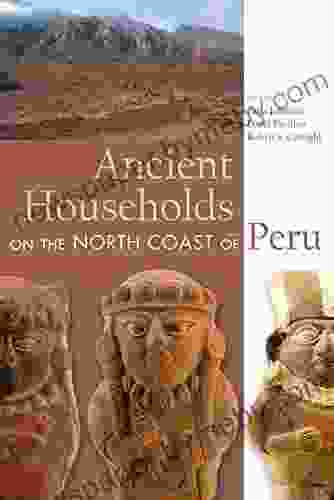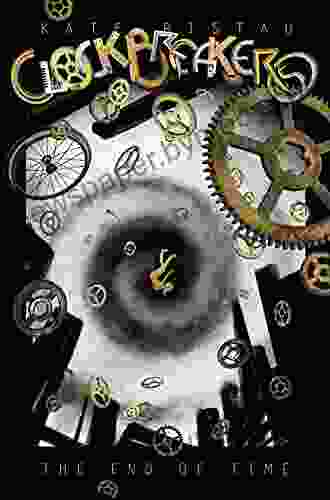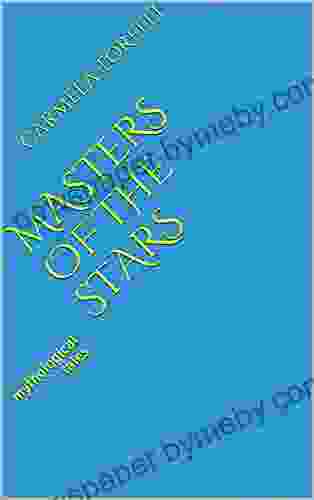The Survival Of The Bark Canoe: A Testament to Native American Ingenuity and Cultural Heritage

In the annals of human innovation, the bark canoe stands as an enduring masterpiece of craftsmanship and ingenuity. For centuries, Native Americans across North America relied on these remarkable vessels to navigate rivers, lakes, and coastal waterways, carrying them through journeys of exploration, trade, and cultural exchange.
Today, the bark canoe remains a potent symbol of Native American heritage and a testament to the enduring power of traditional knowledge. Through its intricate construction techniques, intricate designs, and deep spiritual significance, the bark canoe offers a glimpse into the rich tapestry of Indigenous cultures and their profound connection to the natural world.
4.5 out of 5
| Language | : | English |
| File size | : | 1729 KB |
| Text-to-Speech | : | Enabled |
| Screen Reader | : | Supported |
| Enhanced typesetting | : | Enabled |
| Word Wise | : | Enabled |
| Print length | : | 114 pages |
The History of the Bark Canoe
The bark canoe's origins can be traced back thousands of years, with archaeological evidence suggesting its use as early as 8000 BCE. Over time, Native Americans refined their canoe-building techniques, adapting them to the specific environments they inhabited. From the vast boreal forests of the north to the coastal waters of the Pacific Northwest, each tribe developed its unique style and design.
Birchbark, with its exceptional strength, lightness, and water resistance, emerged as the preferred material for canoe construction. Native Americans harvested the bark from living birch trees, carefully peeling it away without damaging the tree itself. This sustainable practice ensured the preservation of the forest ecosystem while providing an essential resource for canoe builders.
The Art of Canoe Building
Building a bark canoe was a labor-intensive and highly skilled process that could take weeks or even months to complete. Each canoe was a unique masterpiece, reflecting the craftsmanship and artistic vision of its creator. The process involved:
- Harvesting the bark: Birch trees were carefully selected for their size and the quality of their bark. The bark was then peeled away in long, thin sheets, preserving the tree's integrity.
- Shaping the hull: Using wooden ribs and gunwales, the canoe's shape was formed. The bark sheets were then sewn together with spruce roots or other natural materials, creating a watertight seal.
- Adding the gunwales and thwarts: Wooden gunwales and thwarts provided structural support and rigidity to the canoe. They were carefully fitted and secured, ensuring the canoe's stability and durability.
- Applying designs and decorations: Many Native American tribes adorned their canoes with intricate designs and symbols. These decorations could represent clan affiliations, personal achievements, or spiritual beliefs.
The Significance of the Bark Canoe
Beyond its practical uses for transportation and hunting, the bark canoe held profound cultural and spiritual significance for Native Americans. It was seen as a symbol of community, identity, and connection to the land and water.
Canoes played a central role in ceremonies and rituals, serving as vessels for spiritual journeys and connecting different communities along waterways. They were also used for trade and diplomacy, enabling Native Americans to establish networks and exchange goods and ideas across vast distances.
In modern times, the bark canoe continues to be a symbol of Native American resilience and cultural pride. It is celebrated in art, literature, and music, and remains an important part of many Indigenous communities' traditions and practices.
The Survival of Tradition
Despite the of modern materials and transportation methods, the art of bark canoe building is still practiced by dedicated artisans and cultural preservationists. Organizations such as the North American Native Canoe Association (NANCA) are working to revive traditional canoe-making techniques and promote the use of canoes in outdoor recreation and cultural events.
By embracing traditional knowledge and passing it on to future generations, Native Americans are ensuring the survival of the bark canoe as a living legacy of their cultural heritage. Canoeing workshops, historical reenactments, and cultural festivals provide opportunities for people to learn about the history, construction, and significance of these remarkable vessels.
The bark canoe is more than just a mode of transportation; it is a testament to the ingenuity, resilience, and cultural richness of Native Americans. Through centuries of innovation and adaptation, the bark canoe has played a vital role in exploration, trade, and cultural exchange. Today, it remains a potent symbol of Indigenous heritage and a source of inspiration for all who appreciate the beauty and power of human creativity.
As we delve deeper into the history, construction, and significance of the bark canoe, we gain a deeper understanding of the enduring legacy of Native American cultures. By embracing traditional knowledge and preserving cultural practices, we honor the past and ensure a vibrant future for generations to come.
4.5 out of 5
| Language | : | English |
| File size | : | 1729 KB |
| Text-to-Speech | : | Enabled |
| Screen Reader | : | Supported |
| Enhanced typesetting | : | Enabled |
| Word Wise | : | Enabled |
| Print length | : | 114 pages |
Do you want to contribute by writing guest posts on this blog?
Please contact us and send us a resume of previous articles that you have written.
 Book
Book Novel
Novel Page
Page Chapter
Chapter Text
Text Story
Story Genre
Genre Reader
Reader Library
Library Paperback
Paperback E-book
E-book Magazine
Magazine Newspaper
Newspaper Paragraph
Paragraph Sentence
Sentence Bookmark
Bookmark Shelf
Shelf Glossary
Glossary Bibliography
Bibliography Foreword
Foreword Preface
Preface Synopsis
Synopsis Annotation
Annotation Footnote
Footnote Manuscript
Manuscript Scroll
Scroll Codex
Codex Tome
Tome Bestseller
Bestseller Classics
Classics Library card
Library card Narrative
Narrative Biography
Biography Autobiography
Autobiography Memoir
Memoir Reference
Reference Encyclopedia
Encyclopedia John L Field
John L Field Prem Carnot
Prem Carnot Susan Mcclelland
Susan Mcclelland John Keegan
John Keegan Simon Tam
Simon Tam Joe Cartwright
Joe Cartwright Maryann Cocca Leffler
Maryann Cocca Leffler Robin Suerig Holleran
Robin Suerig Holleran William Golding
William Golding Kathryn Tanner
Kathryn Tanner Juju Sundin
Juju Sundin Ken Ilgunas
Ken Ilgunas Samir Amin
Samir Amin Melissa Stephenson
Melissa Stephenson Matthieu Auzanneau
Matthieu Auzanneau Joe Casey
Joe Casey Xabier K Fernao
Xabier K Fernao Zhiyue Bo
Zhiyue Bo Johan Nerholz
Johan Nerholz Michael Sean Comerford
Michael Sean Comerford
Light bulbAdvertise smarter! Our strategic ad space ensures maximum exposure. Reserve your spot today!
 Luke BlairFollow ·15.9k
Luke BlairFollow ·15.9k Isaiah PriceFollow ·18.2k
Isaiah PriceFollow ·18.2k Marvin HayesFollow ·11.8k
Marvin HayesFollow ·11.8k Timothy WardFollow ·4.4k
Timothy WardFollow ·4.4k Christopher WoodsFollow ·13.1k
Christopher WoodsFollow ·13.1k Juan RulfoFollow ·14k
Juan RulfoFollow ·14k Eric HayesFollow ·8.4k
Eric HayesFollow ·8.4k Derek CookFollow ·18.9k
Derek CookFollow ·18.9k

 Jermaine Powell
Jermaine PowellThe Ultimate Guide to Unlocking Consistent Profitable...
Introducing the 2nd Edition of the...

 Yasunari Kawabata
Yasunari KawabataMinute Microskills Videos: The Ultimate Guide for Visual...
Unlock Your Potential with Bite-Sized Video...

 Nathan Reed
Nathan ReedUnveiling the Wonders of Yosemite through John Muir's...
Immerse yourself in the breathtaking beauty...

 Gabriel Garcia Marquez
Gabriel Garcia MarquezWhen You Find Me Novel: A Gripping Mystery Unravels
In the sleepy...

 Esteban Cox
Esteban CoxMountains of California: An Essential History of...
From the towering...

 Devin Ross
Devin RossComm Check: Unveiling the Heartbreaking Final Flight of...
Comm Check: The Final Flight of Shuttle...
4.5 out of 5
| Language | : | English |
| File size | : | 1729 KB |
| Text-to-Speech | : | Enabled |
| Screen Reader | : | Supported |
| Enhanced typesetting | : | Enabled |
| Word Wise | : | Enabled |
| Print length | : | 114 pages |












